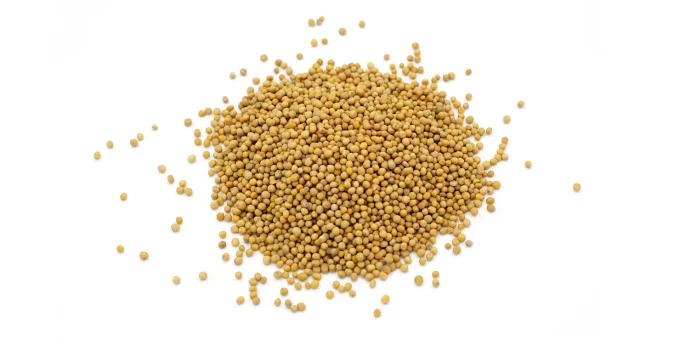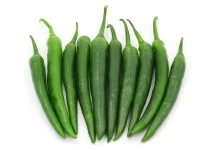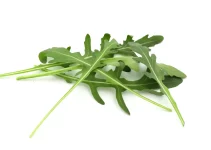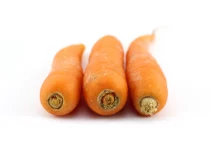Let me make it clear right from the start that one of the best mustard seed substitutes for savory dishes is mustard powder or ground mustard.
I also believe that it’s one of the most accessible in many parts of the world but I might be wrong on that.
Plus, we can also use mustard powder for pickles so it really works as a substitute in everything we choose to do.
When it comes to one of the best mustard seed substitutes as a spice for making pickles, I recommend buying pickling spice or pickle mix.
Most countries have their own versions of ready-made packages or containers of pickle mixes or pickling spices. You just have to buy what you can find in your local stores and then you can make whatever pickles you want, even if you can’t find mustard seeds to buy separately.
I wanted to make clear that these are my two best mustard seed substitutes recommendations.
However, there are also other ingredients that we can use in our recipes to replace the use of mustard seeds. These are: wholegrain mustard, yellow mustard, Dijon mustard, horseradish, etc.
Table of Contents
10 Best Mustard Seed Substitutes
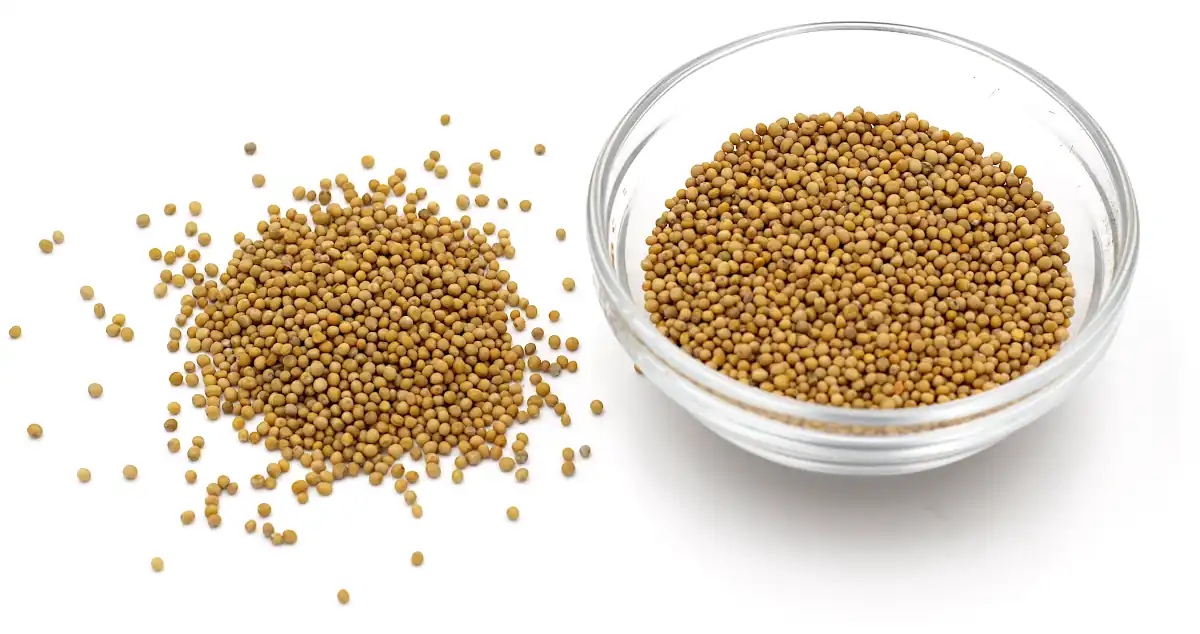
To make a recap of what I talked in my introduction, the best mustard seed substitutes are:
- mustard powder (ground mustard)
- wholegrain mustard
- pickle mix/pickling spices
- yellow mustard
- Dijon mustard
- horseradish
- wasabi powder
- caraway seeds
- turmeric
- grow our own mustard greens
Also, if you’re interested in using mustard seeds in other interesting ways, you can check out my article on bean sprout substitutes. If you buy mustard seeds for microgreens/sprouting you can grow your own mustard sprouts at home. It’s quite fascinating.
And I also talk about mustard oil in my recommendations for substitutes for corn oil. If you haven’t tried cooking fish in mustard oil, you should definitely do it if you get the chance.
1. Mustard powder (ground mustard): One of the best mustard seed substitutes
Why is mustard powder my favorite substitute for the seeds of the white or yellow mustard herb (Sinapis alba/Brassica alba) belonging to the Brassicaceae family?
Because mustard powder is made by grinding yellow mustard seeds. Thus, it’s what we’re trying to substitute but in powder form.
And that’s why I think that you should consider using mustard powder as a replacement, if you can find some in your local stores.
Mustard powder has a golden yellow color, fine texture and a sharp, mildly spicy flavor and aroma.
Mustard powder and mustard seeds have the same flavor. By using the powder, you’re just skipping the part where you want to grind the seeds in a mortar and pestle.
In order to understand how popular mustard powder is, you should also know that a Cajun spice mix is likely to contain black pepper, cayenne pepper, garlic, mustard powder and thyme.
How to use mustard powder
If you want to enhance the flavor of potatoes, chicken, seafood, meats, legumes, then you use either mustard powder or mustard seeds.
We can use the powder or the seeds in curries, bean dishes, dressings for salads, rubs, marinades and sauces.
Mustard powder and mustard seeds can be used in a 1:1 substitution. These two ingredients are used interchangeably.
However, you must also keep in mind that ground mustard has a hotter flavor than the seeds. Thus, if you’re not a fan of hot flavors, use a bit less ground mustard than the recipe calls for mustard seeds.
You could use ¾ teaspoon mustard powder to substitute 1 teaspoon seeds.
Personally, my motto is the hotter the better so I make a direct 1:1 substitution.
Does mustard powder (ground mustard) work for pickling?
Mustard powder can absolutely be used to make pickles.
Some of the recipes where ground mustard is used as a spice are called mustard pickles.
We’re actually pickling cucumbers and other vegetables and not mustard greens but they’re called mustard pickles.
Mustard pickles are a fermented pickle. For example, you can check out this recipe that pickles small cucumbers by using ground mustard as a spice.
Pickling spices are also used in that recipe but, if you don’t have any pickle mix, you can make your own from: red pepper flakes, dill seed/dry dill weed/fresh dill, coriander seeds, black peppercorns, and bay leaves.
2. Wholegrain mustard: my second favorite mustard seed substitute
The way I regard wholegrain mustard is this: we get the best of both worlds. We get yellow mustard and the whole mustard seeds in the mustard.
It’s also a favorite because I believe that we can find wholegrain mustard in many local stores, no matter where we live.
Just look for the mustard with the whole seeds inside the jar. It’s very easy to spot.
1 tablespoon wholegrain mustard substitutes 1 teaspoon mustard seeds.
3. Pickle mix/pickling spices
If you don’t want to concern yourself with gathering a bunch of spices and herbs to make your own pickle mix, then you can just buy whatever you find where you live.
Most countries should have their own variations of pickle mix or pickling spices sold in a package or container.
They’re very easy to use and not that expensive.
In a pinch, if you have a mortar and pestle, you could even ground up a few teaspoons of these pickling spices and use them for your savory dishes, especially for rubs, marinades, dressings, etc. But that also depends on what your mix contains.
4. Yellow mustard
We obviously can’t use yellow mustard for making pickles but we can definitely use it for many savory dishes that call for mustard seeds.
Yellow mustard is made from white (yellow) mustard seeds but that bright yellow color is obtained by adding turmeric.
It is more mild tasting than Dijon mustard but the two types can be used in a 1:1 substitution.
The one exception that comes to mind is if you’re trying to make a dry rub. Yellow mustard won’t work as one of the best mustard seed substitutes because it’s not dry at all. Thus, in the case of a dry rub we need mustard powder.
Generally, when I’m using yellow mustard, which is liquid, to replace mustard seeds, which are a dry spice, I’m not worried about the additional liquid that yellow mustard brings to the dish.
Nevertheless, if you want to follow the ratio of liquids to a T, then you can substract 1 tsp liquid for every 1 tbsp of yellow mustard added as one of the best mustard seed substitutes.
1 tbsp yellow mustard substitutes 1 tsp mustard seeds.
5. Dijon mustard
There is quite a major difference between Dijon mustard and yellow mustard so I chose to talk about them separately because they’re quite different.
The difference stems from the fact that Dijon mustard is made from brown mustard seeds. I don’t need to spell out what yellow mustard is made from, it’s in the name. It’s made from white (yellow) seeds.
Brown mustard seeds have a very sharp flavor and are often used in Indian cooking. So, I would say that we can use Dijon mustard as a substitute even in Indian dishes.
However, you must also note that the ingredients for Dijon mustard are white wine vinegar, ground black pepper, shallots and dried mustard seeds. Thus, it has a more complex and a bit different flavor than if we were to use just plain mustard seeds in a recipe.
Dijon mustard has a tangy, sharp, and strong flavor with a bit of spice. We could say that the mustard flavor really shines through when it comes to Dijon.
It’s especially used for dressings, marinades, sauces for vegetables and meats, for dishes with fish, etc.
When it comes to making savory dishes, it’s almost as versatile as mustard seeds. We just can’t use it for pickles and dry rubs.
1 tbsp Dijon mustard will substitute 1 tsp mustard seeds.
6. Horseradish
Do horseradish and mustard seeds have much in common when it comes to flavors? They might belong to the same mustard family but I don’t think they have similar flavors.
For example, if you’re tasting yellow mustard and then you’re tasting horseradish yellow mustard, you’ll notice that the horseradish one stands out quite a lot.
I should also add that not everyone really loves the taste of horseradish. If you’re preparing a dish for friends or for extended family, I think you should make sure that everyone is OK with the taste of horseradish. I’m not the biggest fan but I can love it in certain combinations if the flavor is a bit more subtle.
Horseradish is a condiment that goes well with meats and fish.
One of my favorite dressings for a salad with potatoes and smoked duck breast is made with horseradish. That’s one combination where I absolutely love this spicy root vegetable from the mustard family.
Overall, I much prefer the above recommendations as the best mustard seed substitutes.
7. Wasabi powder
I imagine that if you can’t find mustard seeds, you won’t be able to find wasabi powder either. But I might be wrong.
Wasabi powder is used for its spiciness. However, it’s spicier than the seeds we’re trying to replace so use it with moderation.
Some people would say that wasabi powder is similar in taste to hot mustard or horseradish. In fact, most common wasabi flavorings are made of horseradish and food coloring.
Thus, just skip the wasabi powder and use the natural horseradish root.
8. Caraway seeds
In order to place the flavor of caraway seeds, you should know that their flavor is sometimes confused with fennel or cumin.
Caraway seeds have a nutty, bittersweet sharpness with a hint of citrus and anise.
As you can see, they don’t have much in common with the ingredient we’re trying to replace so caraway seeds are not a favorite of mine in this case. I think that caraway seeds are a much better substitute for dill seed.
9. Turmeric
Since yellow mustard is made from mustard seeds and turmeric, then I think you could use turmeric as a mustard seed substitute if you have nothing else.
You can buy it as either turmeric root or turmeric powder. I think the powder form is easier to find for most of us.
However, you must take into account that turmeric is overwhelmingly earthy and bitter, it’s almost musky with a bit of peppery spice.
Turmeric is famous as a curry spice so if you want to make a curry recipe you must absolutely have turmeric but you can skip on adding mustard seeds if you don’t have them.
10. Grow mustard greens at home
If you live in a region that doesn’t have most of the ingredients that I talked about and, most importantly, you’d really like to have mustard seeds in your kitchen, then there’s another option.
You can grow your own mustard greens. You can enjoy their leaves when they’re young and then continue growing the plants until they reach the flowering stage. Then, the ripening stage happens and the seeds are produced.
Like all greens, including lettuce, watercress, spinach, arugula and others, mustard greens are also cool-weather plants. Thus, planting is done early in the season.
The good news is that warm weather will make the plants bolt. They’ll flower and then they’ll produce the mustard seeds that we want.
Here is a guide that explains how we can grow our own mustard greens at home.
Basically, we must first choose which mustard green variety we’re going to grow. That will mostly depend on the kind of seeds you can find in your area for planting. B. juncea (brown mustard seeds) and B. rapa are two of the most popular varieties of mustard greens that we can grow at home.
You can start planting very early, up to six weeks before the average last frost date where you live. Moreover, you can sow a new batch of seeds every 30 days if you want fresh baby leaves constantly.
The first leaves will be ready for harvest in 30-60 days. However, you’ll also have access to their seeds pretty quickly because they reach the flowering stage rapidly. Your mustard green plants will be full of seed pods.
What Are Mustard Seeds?
Mustard seeds are obtained from the fruit pod that grows on the mustard plants belonging to the Brassicaceae family.
Depending on which mustard plant they’re harvested from, we get two types of mustard seeds:
- white (yellow) from Sinapis alba/Brassica alba
- brown (Asian) from Brassica juncea – also called Indian mustard or Chinese mustard
Generally, when we’re talking about using mustard seeds for cooking and pickling, we’re referring to the yellow or brown ones.
But they can also come in different colors: white, yellow, brown, black.
It is considered that mustard seeds have originated in Ancient Egypt. They were used by Greeks as a spice to enhance flavors but also medicinally.
Back to present days, according to suvie.com, mustard is perhaps the most loved spice in the world. It is the highest-selling spice in India, Pakistan, Canada, the US and Germany.
Whether we’re using it for pickling, as a condiment on hot dogs, for dressings, rubs, marinates, sauces, for enhancing the flavor of legumes, vegetables, meats and fish, mustard seeds occupy a top place on our list of favorite spices.
It is also one of the most loved spices in Indian cuisine. The seeds are dropped into hot oil until they pop and crackle. It’s done in order to aromatic the mustard seeds so that they’re even more intensely flavorful.
One of the most famous recipes is Kerala fish curry. However, if you don’t have any mustard seeds or mustard powder, then simply make this famous dish without this spice.
Or you could add 1 tablespoon of wholegrain mustard or even Dijon mustard, they even work in recipes like this one as one of the best mustard seed substitutes.

